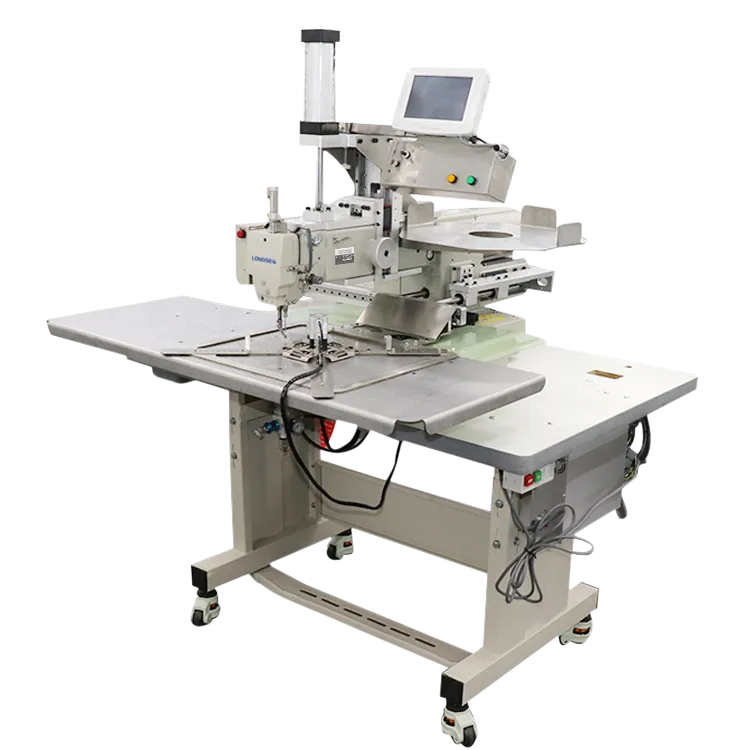what is an overlocker in sewing
What is an Overlocker in Sewing?
An overlocker, also known as a serger, is an essential tool in the textile and sewing industry, widely used for finishing edges, preventing fraying, and creating professionally polished seams. Many sewing enthusiasts may wonder what sets an overlocker apart from a regular sewing machine. Here, we will delve into the functionalities of an overlocker, its advantages, and how it can elevate your sewing experience.
Understanding the Overlocker
At its core, an overlocker is a specialized sewing machine that uses multiple threads and needles to create a range of stitch types that are ideal for knit and woven fabrics. Unlike standard sewing machines, which typically use one or two threads, an overlocker can use three, four, or even five threads simultaneously. This capability allows for various stitch formations such as overlock stitches, rolled hems, and flatlock seams.
One of the primary roles of an overlocker is to finish the raw edges of fabric. When sewing garments, it is crucial to secure the fabric edges to prevent them from unraveling. An overlocker achieves this by trimming excess fabric while simultaneously encasing the raw edges with thread. This process creates a clean and polished finish, enhancing the garment's durability and appearance.
Advantages of Using an Overlocker
1. Speed and Efficiency Overlockers are designed for speed, making them incredibly efficient for projects that require multiple seams or finishing techniques. This capacity allows sewists to work through their projects faster than they would with a standard sewing machine.
2. Professional Finish One of the standout features of an overlocker is its ability to give garments a professional appearance. The clean, finished edges and advanced stitches make it ideal for projects where aesthetics matter, such as clothing, home décor, and crafts.
3. Versatility Overlockers are versatile tools that can handle various fabric types, including jersey, knit, and woven materials. They can create different stitch options, making them suitable for a wide range of sewing projects.
4. Stretched and Flexible Seams For knit fabrics, overlockers provide the flexibility needed for seams to stretch without breaking. This characteristic is particularly useful when working with activewear, lingerie, or any garment that requires movement.
what is an overlocker in sewing

5. Reduced Fraying Since an overlocker trims and finishes edges in one step, it significantly reduces fraying, keeping garments looking neat and extending their life.
How to Use an Overlocker
Using an overlocker may initially seem daunting due to its multiple threads and specialized functions. However, with practice, it becomes a valuable tool in any sewing kit. Here are some basic steps to get started
1. Threading the Machine Threading an overlocker can be more complex than a regular sewing machine. Each thread must be placed correctly in the machine, and it is essential to follow the threading diagrams provided by the manufacturer.
2. Choosing the Right Stitch Depending on your project, you may need to switch between different stitch options. Familiarize yourself with the various stitch types and their applications.
3. Adjusting the Tension Proper tension settings are crucial for achieving a neat finish. It may take some experimentation to get the tension just right.
4. Practicing on Scrap Fabric Before working on your actual project, practice on scrap fabric to get comfortable with the machine's settings, speed, and stitch types.
5. Maintaining the Overlocker Like any sewing machine, regular maintenance such as cleaning and oiling is essential for optimal performance.
Conclusion
An overlocker is an invaluable asset for anyone serious about sewing, whether you're a hobbyist or a professional. Its ability to create clean finishes, handle multiple fabric types, and speed up the sewing process makes it a worthy investment. By understanding how to use and care for an overlocker, you can expand your sewing skills and produce high-quality garments that showcase your creativity and craftsmanship. Embrace the world of overlocking, and you’ll discover a new level of sewing mastery.
-
Heavy Duty Leather Sewing Machine: A Must-Have for Professional LeatherworkNewsMay.28,2025
-
Leather Sewing Machine: Essential for High-Quality LeathercraftNewsMay.28,2025
-
Extra Heavy Duty Sewing Machine for Premium Leather ApplicationsNewsMay.28,2025
-
Walking Foot Cylinder Arm Sewing Machine: Precision and Power CombinedNewsMay.28,2025
-
Industrial Cylinder Arm Sewing Machine: Engineered for High-Performance StitchingNewsMay.28,2025
-
Cylinder Bed Sewing Machine: A Powerful Solution for Precision StitchingNewsMay.28,2025
-
Zigzag Sewing MachineNewsMay.12,2025





























